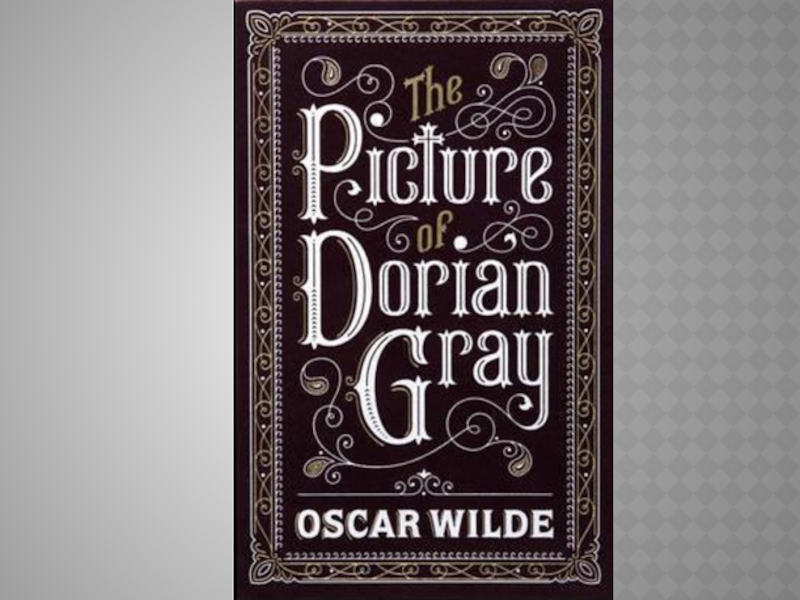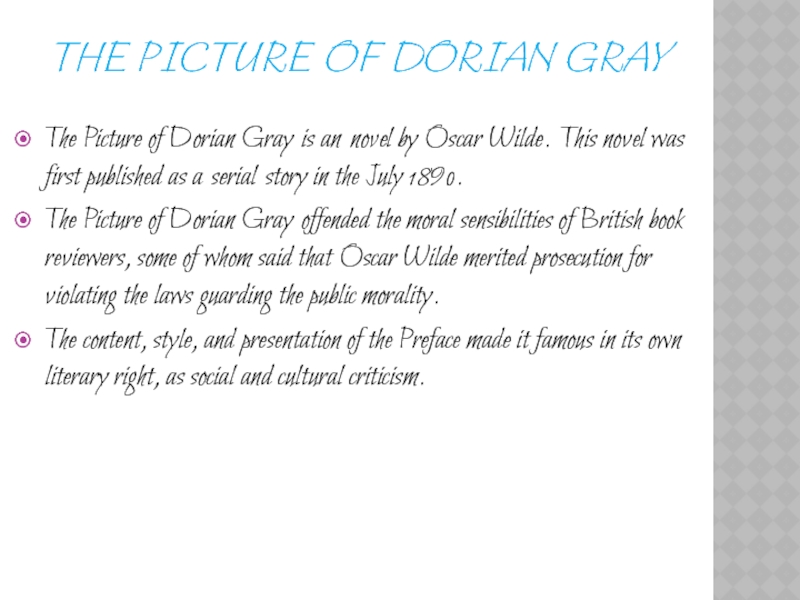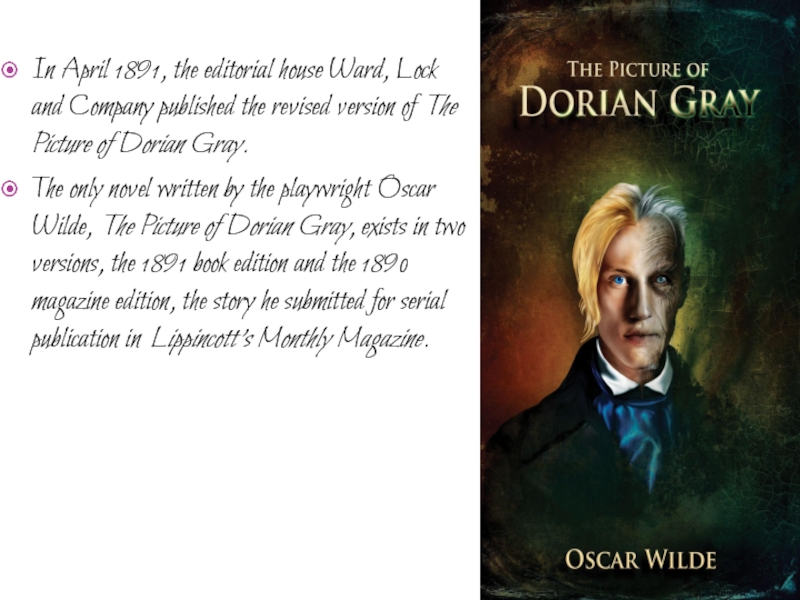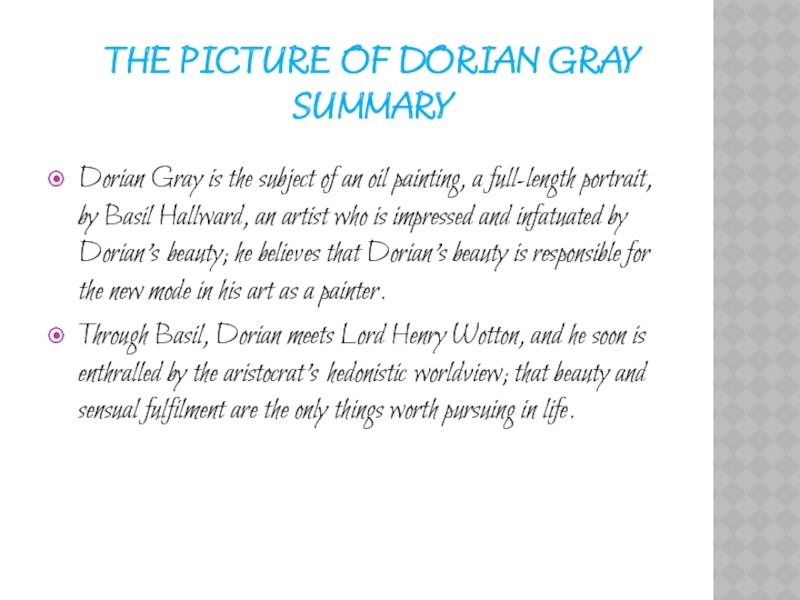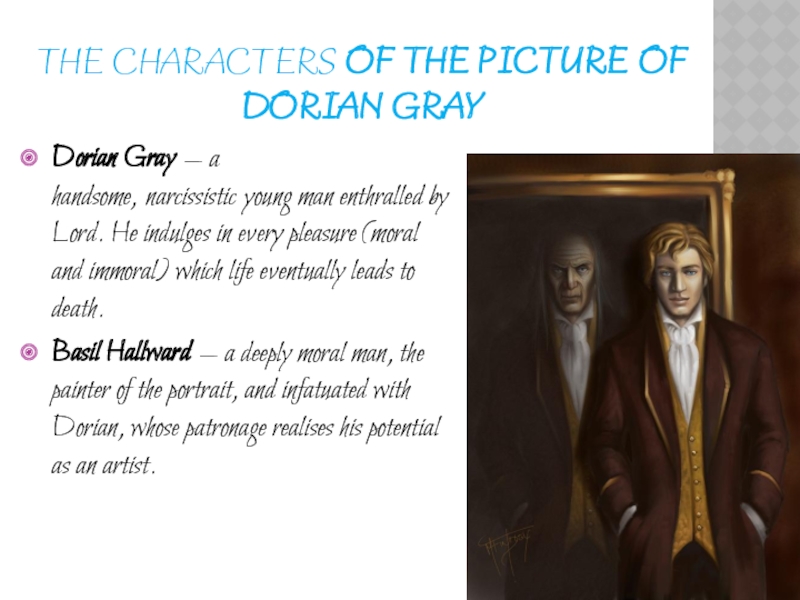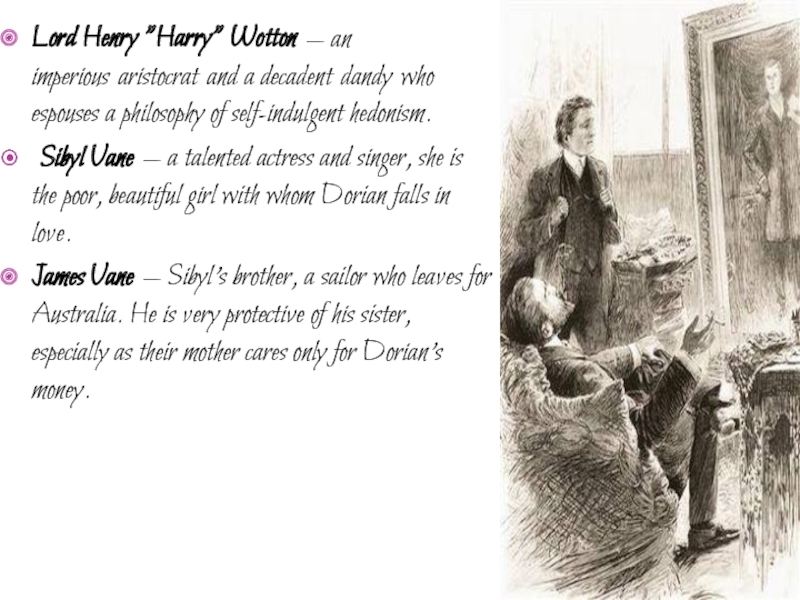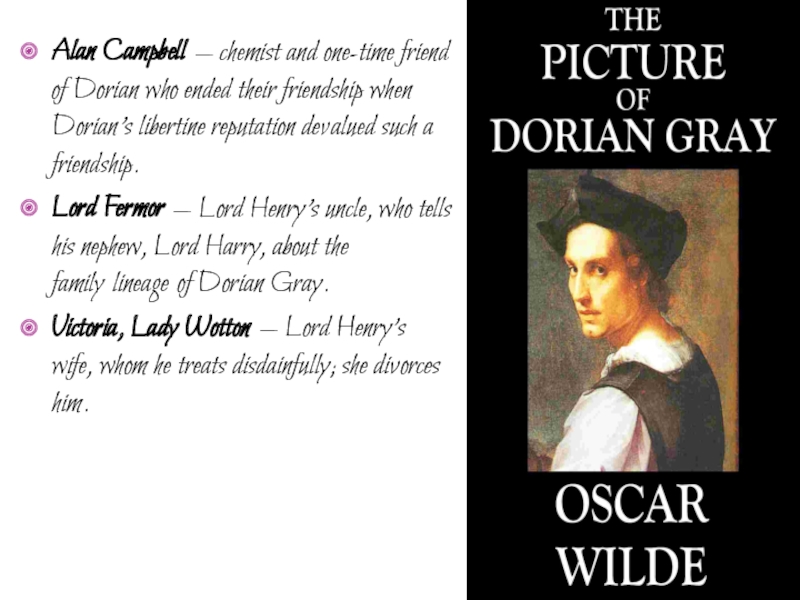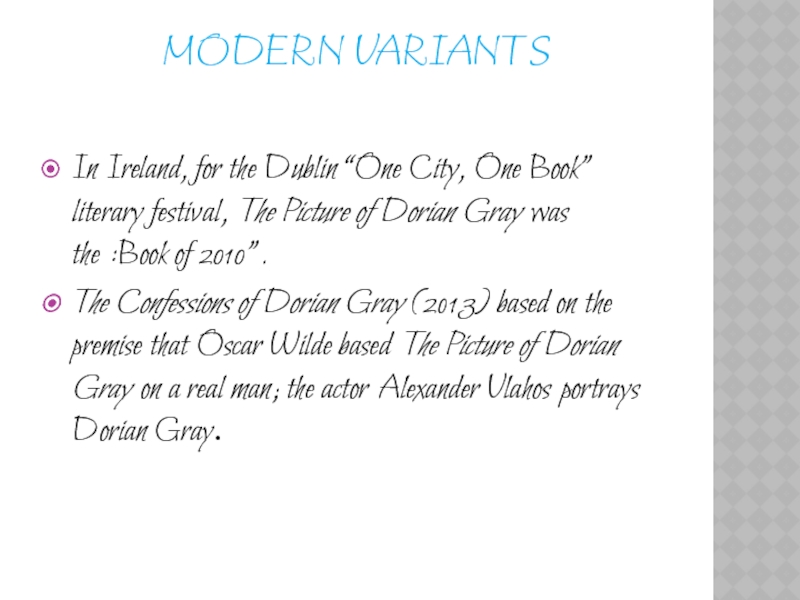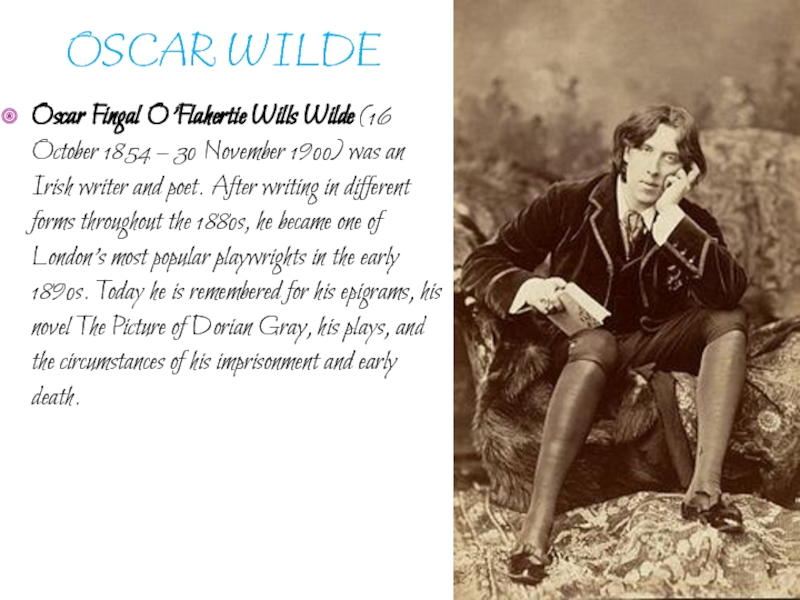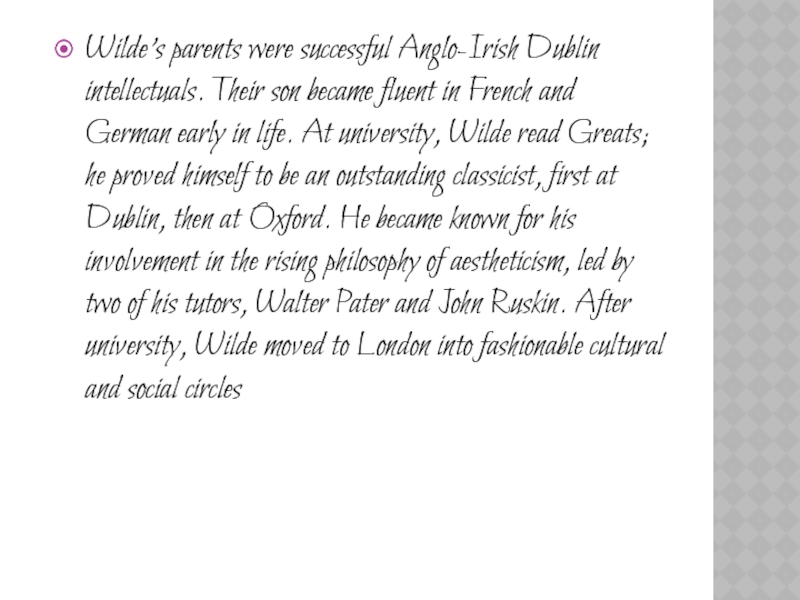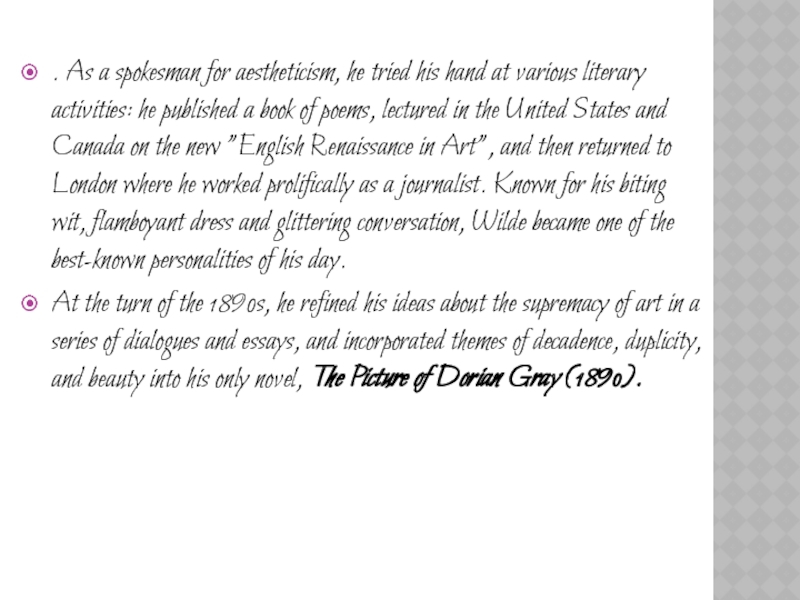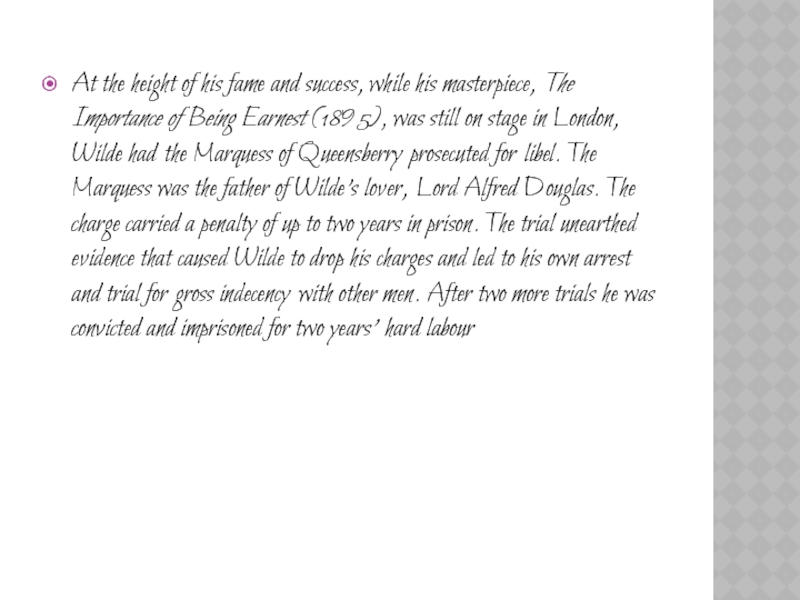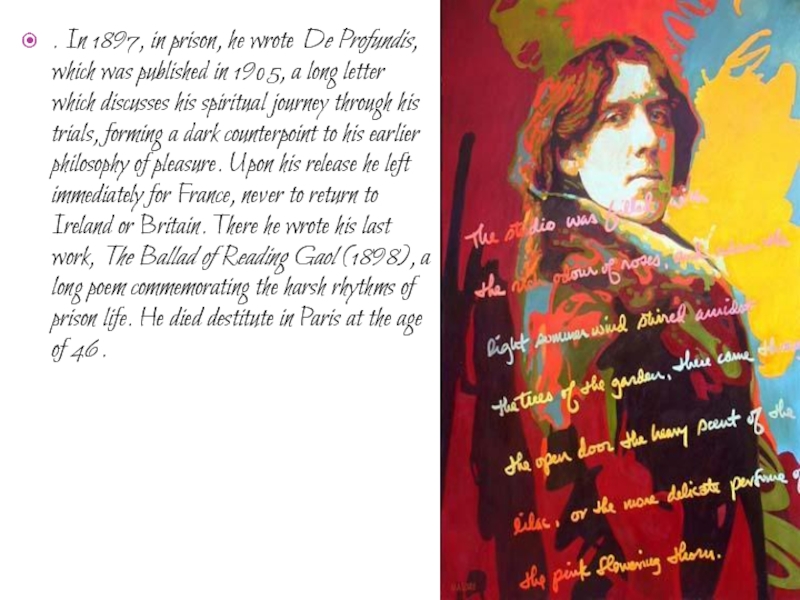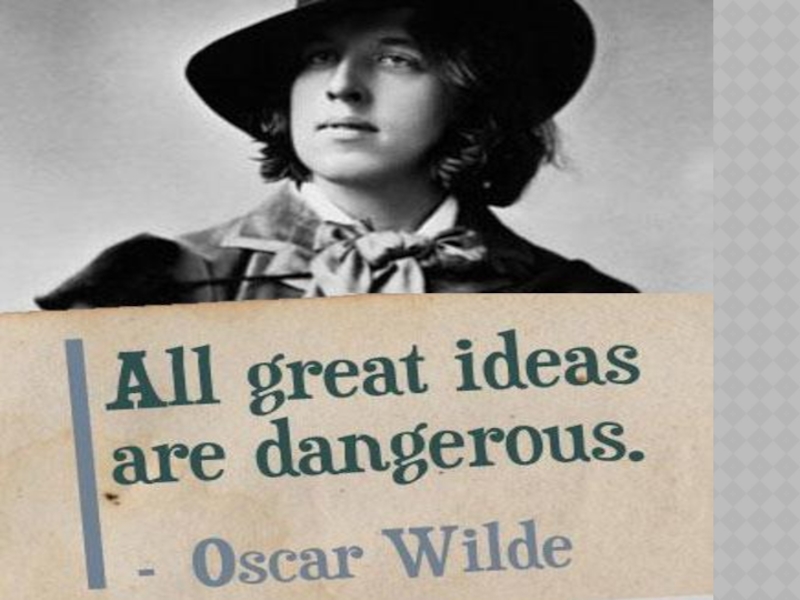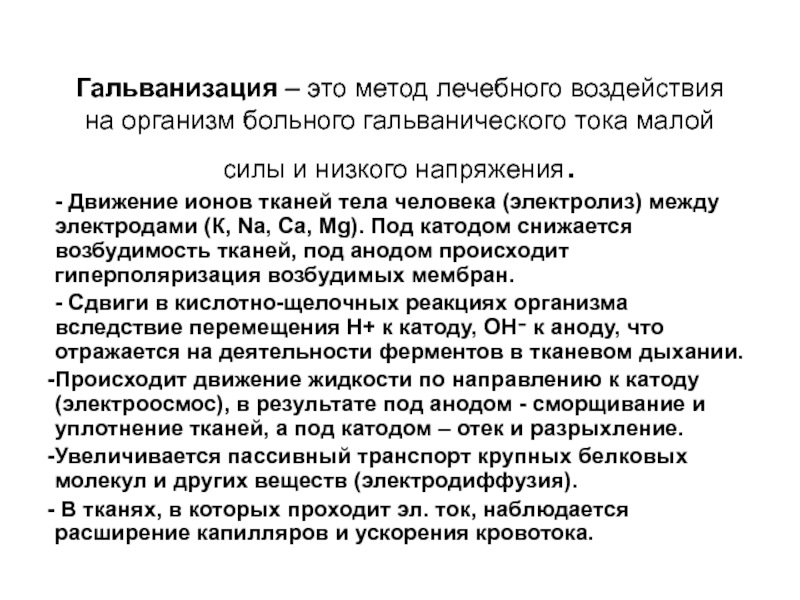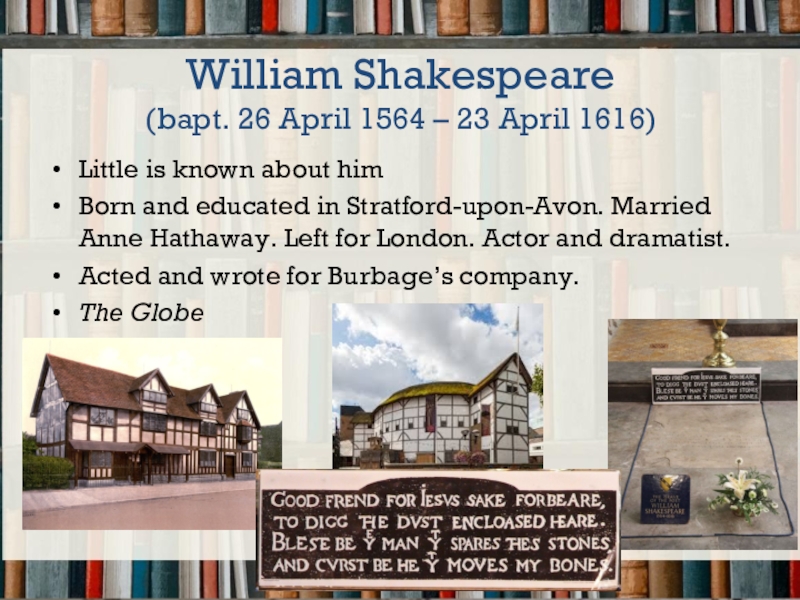Слайд 2The Picture of Dorian Gray
The Picture of Dorian Gray is an
novel by Oscar Wilde. This novel was first published as
a serial story in the July 1890.
The Picture of Dorian Gray offended the moral sensibilities of British book reviewers, some of whom said that Oscar Wilde merited prosecution for violating the laws guarding the public morality.
The content, style, and presentation of the Preface made it famous in its own literary right, as social and cultural criticism.
Слайд 3
In April 1891, the editorial house Ward, Lock and Company
published the revised version of The Picture of Dorian Gray.
The only
novel written by the playwright Oscar Wilde, The Picture of Dorian Gray, exists in two versions, the 1891 book edition and the 1890 magazine edition, the story he submitted for serial publication in Lippincott's Monthly Magazine.
Слайд 4The Picture of Dorian Gray Summary
Dorian Gray is the subject
of an oil painting, a full-length portrait, by Basil Hallward,
an artist who is impressed and infatuated by Dorian's beauty; he believes that Dorian’s beauty is responsible for the new mode in his art as a painter.
Through Basil, Dorian meets Lord Henry Wotton, and he soon is enthralled by the aristocrat's hedonistic worldview; that beauty and sensual fulfilment are the only things worth pursuing in life.
Слайд 5The Characters of the picture of dorian gray
Dorian Gray — a
handsome, narcissistic young man enthralled by Lord. He indulges in every pleasure
(moral and immoral) which life eventually leads to death.
Basil Hallward — a deeply moral man, the painter of the portrait, and infatuated with Dorian, whose patronage realises his potential as an artist.
Слайд 6Lord Henry "Harry" Wotton — an imperious aristocrat and a decadent dandy who espouses a
philosophy of self-indulgent hedonism.
Sibyl Vane — a talented actress and singer,
she is the poor, beautiful girl with whom Dorian falls in love.
James Vane — Sibyl's brother, a sailor who leaves for Australia. He is very protective of his sister, especially as their mother cares only for Dorian's money.
Слайд 7Alan Campbell — chemist and one-time friend of Dorian who ended
their friendship when Dorian's libertine reputation devalued such a friendship.
Lord
Fermor — Lord Henry's uncle, who tells his nephew, Lord Harry, about the family lineage of Dorian Gray.
Victoria, Lady Wotton — Lord Henry's wife, whom he treats disdainfully; she divorces him.
Слайд 8Modern variants
In Ireland, for the Dublin “One City, One Book”
literary festival, The Picture of Dorian Gray was the :Book of 2010”.
The Confessions
of Dorian Gray (2013) based on the premise that Oscar Wilde based The Picture of Dorian Gray on a real man; the actor Alexander Vlahos portrays Dorian Gray.
Слайд 9Oscar Wilde
Oscar Fingal O'Flahertie Wills Wilde (16 October 1854 –
30 November 1900) was an Irish writer and poet. After
writing in different forms throughout the 1880s, he became one of London's most popular playwrights in the early 1890s. Today he is remembered for his epigrams, his novel The Picture of Dorian Gray, his plays, and the circumstances of his imprisonment and early death.
Слайд 10Wilde's parents were successful Anglo-Irish Dublin intellectuals. Their son became
fluent in French and German early in life. At university,
Wilde read Greats; he proved himself to be an outstanding classicist, first at Dublin, then at Oxford. He became known for his involvement in the rising philosophy of aestheticism, led by two of his tutors, Walter Pater and John Ruskin. After university, Wilde moved to London into fashionable cultural and social circles
Слайд 11. As a spokesman for aestheticism, he tried his hand
at various literary activities: he published a book of poems,
lectured in the United States and Canada on the new "English Renaissance in Art", and then returned to London where he worked prolifically as a journalist. Known for his biting wit, flamboyant dress and glittering conversation, Wilde became one of the best-known personalities of his day.
At the turn of the 1890s, he refined his ideas about the supremacy of art in a series of dialogues and essays, and incorporated themes of decadence, duplicity, and beauty into his only novel, The Picture of Dorian Gray (1890).
Слайд 12At the height of his fame and success, while his
masterpiece, The Importance of Being Earnest (1895), was still on stage in
London, Wilde had the Marquess of Queensberry prosecuted for libel. The Marquess was the father of Wilde's lover, Lord Alfred Douglas. The charge carried a penalty of up to two years in prison. The trial unearthed evidence that caused Wilde to drop his charges and led to his own arrest and trial for gross indecency with other men. After two more trials he was convicted and imprisoned for two years' hard labour
Слайд 13. In 1897, in prison, he wrote De Profundis, which was
published in 1905, a long letter which discusses his spiritual
journey through his trials, forming a dark counterpoint to his earlier philosophy of pleasure. Upon his release he left immediately for France, never to return to Ireland or Britain. There he wrote his last work, The Ballad of Reading Gaol (1898), a long poem commemorating the harsh rhythms of prison life. He died destitute in Paris at the age of 46.
